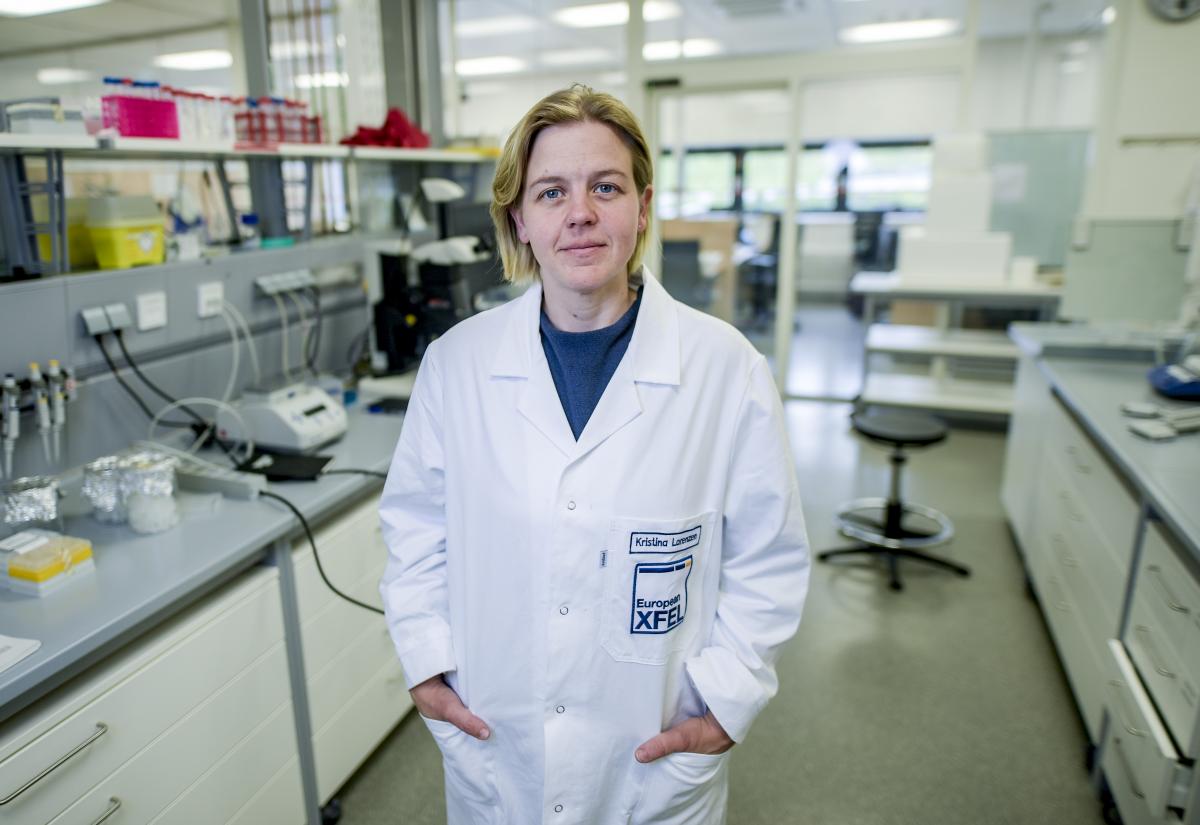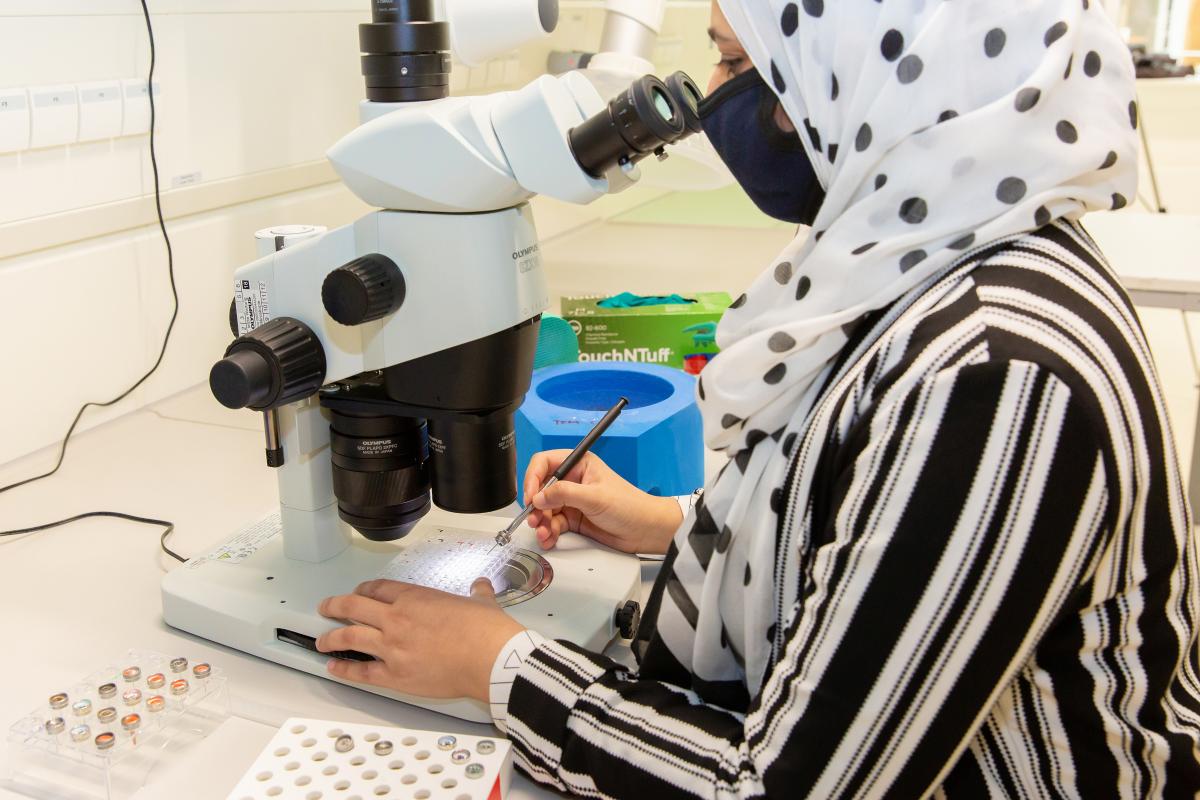Pulling together: a collaborative research approach to study COVID-19 Understand article
This article has been adapted from the original one published on Eu-XFEL News.
How have scientists been working to tackle COVID-19 during the pandemic? This interview from European XFEL gives some interesting insight.
Around the world, research facilities are quickly mobilizing resources, reshaping research programs, setting up collaborations and channelling time and energy into the global research effort to understand the novel Coronavirus, SARS-CoV-2. Even though European XFEL has been in reduced operation mode for the past few months, scientists at the facility have been working hard to get several COVID-19 related research projects up and running. Currently European XFEL is contributing to three projects ranging from basic research to application orientated, all based in the biological laboratories. Kristina Lorenzen, manager of the biolabs at European XFEL, explains what has been going on.

©European XFEL / Axel Heimken
How did you start to get involved in these projects?
Together with several different collaborators, we discussed already early in the year how we could contribute to corona-related research efforts. We have these wonderful lab facilities here at European XFEL, so of course we should use them. The first step, however, was to put together a safety concept of how we could work in the labs while sticking to the hygiene and distance regulations. The safety of our staff is our main priority. Then we put together a research concept for COVID-19 related research, and eventually we got three projects off the ground.
Can you tell us more about these projects?
The collaboration with our colleagues on the DESY campus is probably the easiest to grasp. The project is aimed at identifying a potentially suitable antiviral drug. Together with several other researchers, they are looking at four different proteins – two from the SARS-CoV-2 virus and two from human cells. Their plan is to check how these proteins bind to a range of different drug compounds. So far, they have done the screening on the first protein and are now analysing the data. The second viral protein doesn’t seem to behave as nicely as the first and it’s proving a lot harder to produce it. Three different groups, including us, are now working on different techniques to try and produce this protein in the lab.
How did the screening of the first viral protein go?
That was a huge and impressive effort, even without the current restrictions. They produced a lot of protein crystals – something like 10 000 tiny crystals – which all had to be fished out of their trays manually with tiny loops once they had been soaked in a solution with the compounds. Our collaborators worked in shifts to fish the crystals. That’s hard work! These were then put into the PETRA III beamlines at DESY and X-ray diffraction images were made of the protein structures. Not all crystals diffract, so they got data from about 3600 crystals in the end. In about 17 of those, they could see that the viral protein bound to a potential drug target.
I have now done native mass spectrometry experiments on the protein alone and together with the 17 compounds. Mass spectrometry is like a very precise scale where you can measure the masses of the proteins and identify if and how well something has bound to them. Two of these 17 compounds bound very tightly to the protein, several others were loosely bound.

©DESY / Marta Mayer
Does that mean that those two compounds can now be developed into antiviral drugs against SARS-CoV-2?
Not quite. Of course it would be cool if it did, and we hope to find something, but a hit doesn’t mean that we have a useful drug. All the compounds are approved drugs, or at least in final stage clinical trials. But some have terrible side effects, or maybe need to be administered in such high concentrations to actually have an effect that it wouldn’t be safe to give it to humans. So several partners are now doing follow ups – for example colleagues at the Bernard Nocht Institute in Hamburg are doing assays in cells to see how these drugs affect the behavior of the virus and what concentrations are needed for it to be effective. And even those other loosely bound compounds could have an effect. They could, for example, inhibit the protein from binding somewhere else, or mean that it isn’t so reactive. We’re not there yet!
What about the other two projects that European XFEL is involved in?
The other two projects are more basic research in focus. Together with colleagues at the Heinrich Pette Insititute, we are looking at so-called non-structural proteins in the coronavirus. Of course they have a structure but they do not contribute to the structure of the viral particle. The ones we are interested in are involved in translating the viral RNA genetic code. It is known that a complex of three non-structural proteins translates the RNA into proteins, but we think that the structural organization of these proteins is different to what has been published in the scientific papers so far. We are working on expressing two of these three proteins using the enzyme (a protease) that the virus also uses to cleave the amino acid chain into functional sections to assemble these proteins. We are trying to make sure our experimental set-up resembles the viral environment as much as possible so we feel certain the data we get reflect what would be seen in the virus. If we manage to get proteins soon, we will probably send the crystals to DESY to be measured and see if we can resolve the structure of this complex.
The third project is a longer term project working on expressing viral proteins in insect cells. For this we are working with Lars Redecke and his group at the University of Lübeck who we have worked with in the past. As mentioned for the first project, it is not always easy to produce good samples of the proteins we want to study, and insect cells are an interesting alternative method for when it is difficult to get a protein to crystallise.
Resources
- Learn more about SARS-CoV-2.
- An overview of enzymes, their biological roles and their structures.
- How has drug design evolved over time?
- Read about protein crystallography and the teacher workshops run by the European Learning Laboratory for the Life Sciences (ELLS) at EMBL.
